It’s a good sign when you wake up with mixed feelings--a bit tired from the day before, and at the same time, full of new energy to sprint into your JASON gear, head out the door, and straight to the octagon--our meeting place--before 6:15am. Any minute more, and it’s five push-ups per minute--and in a way, besides learning our lesson, our newfound (or for some, human nature) regard for punctuality has a bit more to do with the visions held by the Cape Eleuthera Institute than just the importance of being able to fit all our activities in one day. And that is efficiency. Efficiency means having the ability to complete a task with the least amount of time and effort--and we saw this in action when we went on the sustainability tour around campus with our environmental educator, Stan. Before the creation of the Cape Eleuthera Institute, a large resort stood in its place. After the founding of the Institute, the limestone in some areas dissolved, creating a new natural habitat when the water rose to create a pond, allowing researchers to conduct their studies and more closely observe marine life such as lemon sharks.
After crossing the bridge, we visited the dining hall where one of the cisterns is located (we even saw a huge frog on the pipe!), and Stan explained to us the importance of UV filtration to purify the rainwater. Our next stop was another outside classroom by the “Poo Poo Garden”--and it’s exactly what it sounds like. In the Poo Poo Garden, black and gray water from the bathroom facilities is deposited into the soil through underground tanks, where the nitrates, nitrites, and phosphates from our waste provide nutrients for the plants growing there (instead of runoff causing dangerous mass algae overgrowth), such as banana trees and elephant ears, that give fruits back to the community.
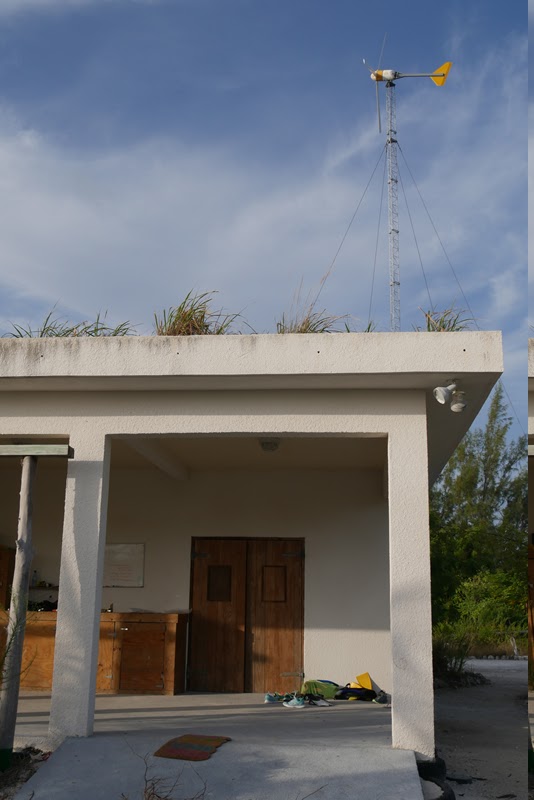 Down the path is the wind turbine, which generates energy for the whole community with a capacity of 10 kilowatts per hour. It’s pretty efficient, and on windy days the Institute can send excess electricity back to the island grid. We also saw that practically every single building has solar panels on the roof, both photovoltaic and thermal panes, which are a bit less efficient, but still do the job.
Down the path is the wind turbine, which generates energy for the whole community with a capacity of 10 kilowatts per hour. It’s pretty efficient, and on windy days the Institute can send excess electricity back to the island grid. We also saw that practically every single building has solar panels on the roof, both photovoltaic and thermal panes, which are a bit less efficient, but still do the job.
Next, we walked over to the bike shed, which is pretty special because it’s one of the three buildings on campus that have a living roof. “Everything here is deliberate,” Stan told us multiple times, because it’s incredible that so many things here are done with so much forethought and care. The living roofs act as a cave, keeping the building cool inside and providing more area for planting--they’ve even planted pineapple trees that should yield some pineapples sometimes this year!
Further down the path was the woodshop where we saw a lot of reused material, such as bottle "bricks" in the structure, and, of course, a living roof. Right next door was the biodiesel facility, with hundreds of gallons of donated cooking oil being stored. We learned that biodiesel is 52% cleaner than regular diesel, and that the three main components are methanol, lye, and cooking oil. Its byproduct, glycerol, is used to make many things, and since there’s so much of it here, kids make soap with it and the rest is stored.
A bit to the right is the Center for Sustainable Development--AKA the CSD (they use a lot of acronyms here at the Institute)--which is the home of the waste products of the facilities, such as recyclables, and pretty much anything that can be repurposed and reused. It’s also home to the largest cistern on campus.
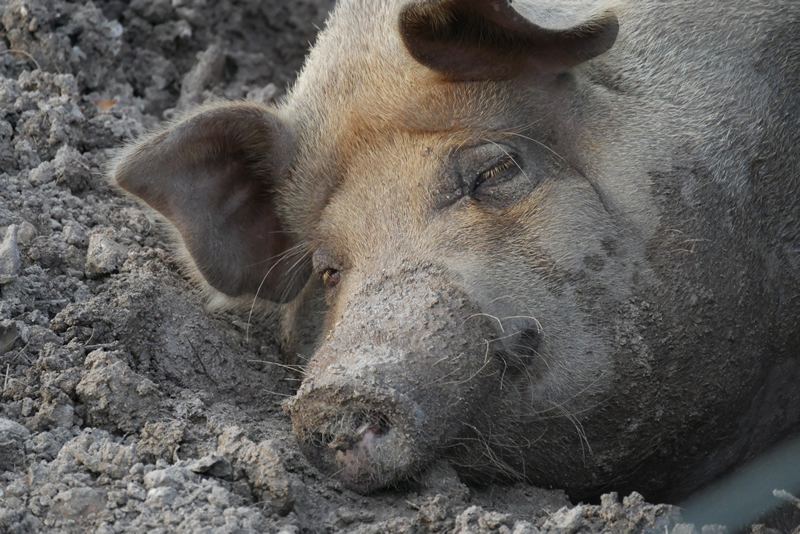
The orchard includes the farm with pigs, chickens, goats, and ducks, followed by the compost bins. Also in the orchard are vegetable gardens and many types of trees and shrubs, such as tamarind and native almonds that can be used in the kitchen.
After breakfast, we all headed back to the octagon, where both teams (Stan & the Staniels--us--, and Team Pedro) competed in a friendly match of Jeopardy with everything we learned from the tour--a very competitive match, actually. It was pretty fun, and we all impressed ourselves with how much we retained from the tour. Most of us would not have been able to answer anything before the tour about sustainability.
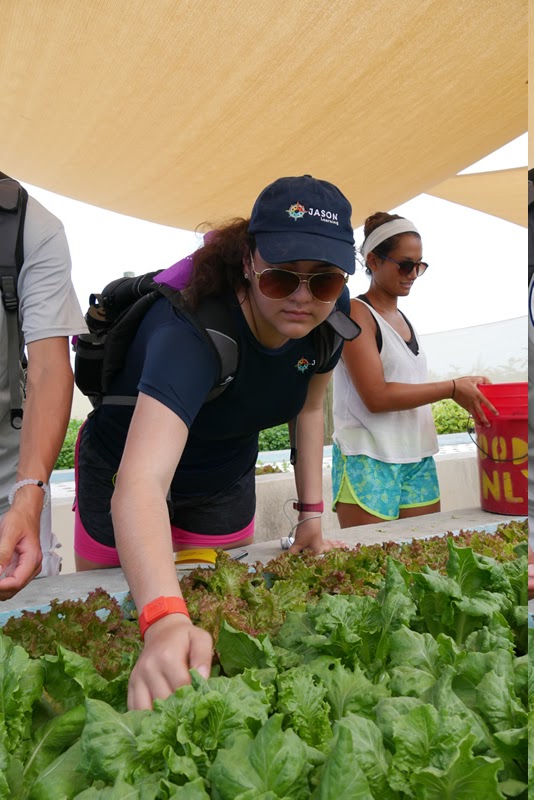
A little while later, we were introduced to an intern at the aquaponics facility. Aquaponics combines hydroponics and aquaculture. The fish in the tanks benefit from the plants, which benefit from the fish. The waste of the fish goes through pipes connected to the aqua garden, and the bacteria in the bionets within the pipes converts the ammonia present in the waste into nitrates, nitrites, and phosphates for the plants to absorb. This (kind of like in the Poo Poo Garden) process cleans the water in the fish tanks, so you have a cycle where you get happy fish and plenty of vegetation, such as the lettuce that we picked and ate for dinner.
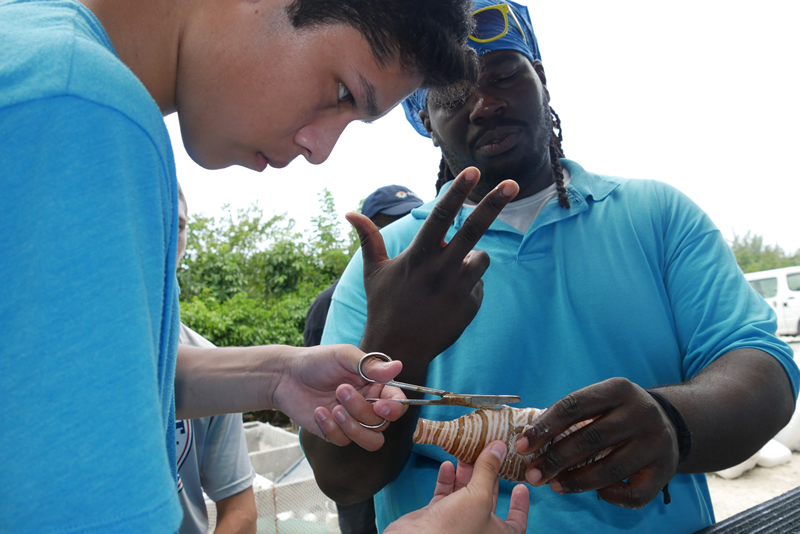
After lunch, we went onto our next activity, which was the lionfish dissection. We were both super excited, because Jude had been telling us about the lionfish ever since our CNN tour. We learned that lionfish is an invasive species that has been spreading around the Caribbean and the east coast of the United States for 30 years now, taking over the habitats, as there is no predator to stop them and their venomous barbs. We had to be very careful when cutting the fins off in order to prevent being pricked by the barbs. When filleting, people keep hot water close to reduce the effects of the venom in case they get pricked. We noticed a couple of interesting things about the lionfish we dissected, such as its tongue, which has a pocket that siphons water and then spits it back out when it’s ready to attack its prey, disorienting it with the gush of water. We also saw its swim bladder, which allows it it to float easily in the water. The fins that we cut off were kept so that they could be made into jewelry--because it may be invasive, but the lionfish is really a very beautiful fish.

We had been in great anticipation of a “surprise” that had been added to the schedule the night before--and it turned out to be even more than one. We headed down to the Marina, and were told en route that we would be feeding some sharks--exciting! At the dock, we had a cooler with a lot of fish to throw into the water. It felt pretty slow, but in just a couple of minutes, there were so many nurse sharks it was difficult to even count them all (we counted around twelve). They were pretty big, with remoras sticking to their sides in a mutualistic symbiotic relationship, where they catch the food floating around the sharks’ mouths. We also saw an eagle ray and lots of other colorful fish. The next stop in our surprise was at a local church which was holding a carnival and cookout of lionfish fritters and hot dogs. The lionfish was very tasty! While waiting for our food, we had the chance to talk to some of the locals and win some prizes for the little ones. Everyone was very friendly, and we really enjoyed being able to spend some time there with them.

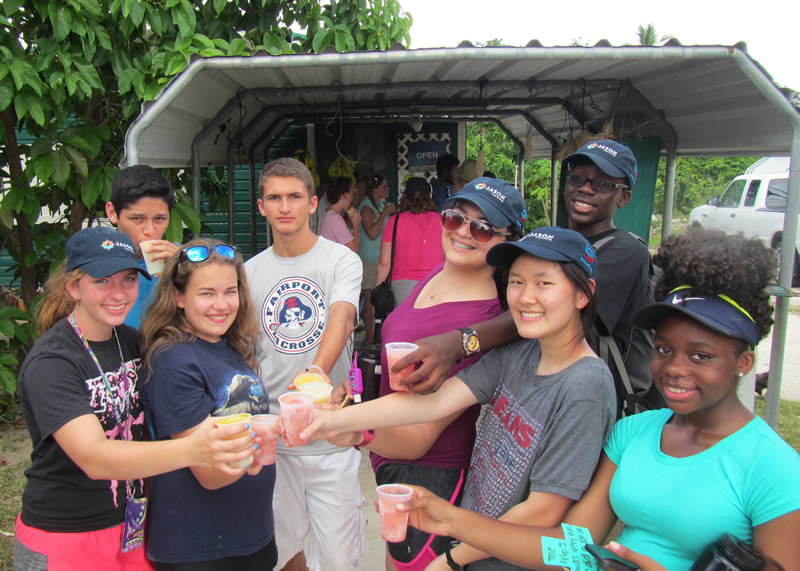
Down the street was also a great part of the surprise that we all needed--cups! Cups in Eleuthera are plastic cups (kind of like the shaved ice from Bahama Buck’s in Houston, but actually in the Bahamas) with a sort of frozen slush with fruit. (We got passion fruit, which was delicious). It was very refreshing and the cherry on top to all of today’s surprises off campus.
After the walk back to the vans, we drove back to the Institute, where the day ended like we’d gotten used to--the abundance of beautiful stars shining so clearly in the night sky, the ocean’s horizon seeming like it went on forever, and the knowledge that when the sun emerged from the horizon once again, a new day followed, full of amazing adventures and knowledge to take with us back home as priceless souvenirs to share.
